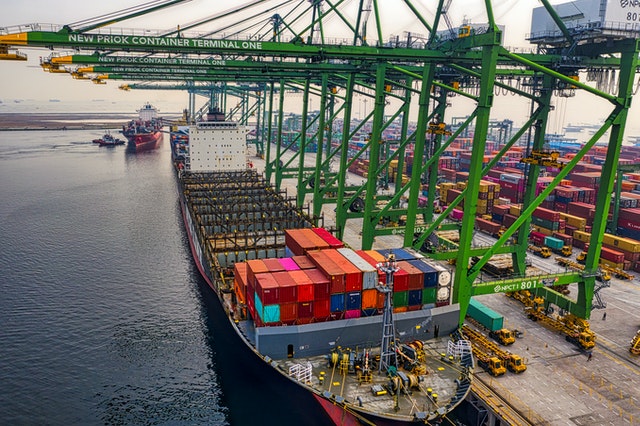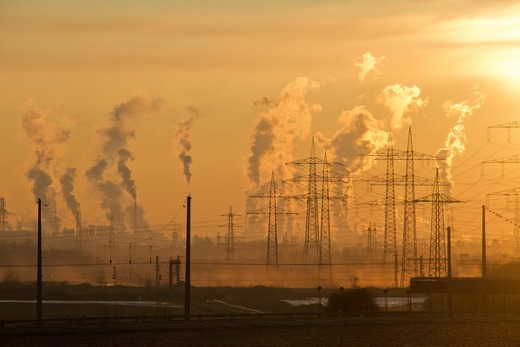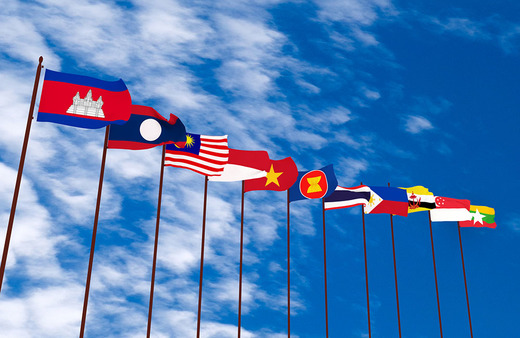The Business Times reported that apart from reducing employees’ carbon footprint from commuting, hybrid working is projected to save organisations an average of US$11,000 every year for every person who works remotely for half of the week. Highlighting this in its latest trends forecast white paper for 2022, workspace service provider IWG said an increased and accelerated adoption of the hybrid working model is expected in the year, and businesses may take the chance to reduce overheads.
The report pointed out that offices no longer have to accommodate all employees at the same time, and this means that companies can downsize their workspace. Not only does this result in leaner corporate real estate footprints, this gives businesses the opportunity to increase profit margins, it said, noting that office rent is typically one of a company’s biggest costs. The US$11,000 estimated savings IWG referred to was calculated based on conservative assumptions by Global Workplace Analytics. The research-based consulting firm had noted that the primary savings will come from increased productivity, lower real estate costs, reduced absenteeism and turnover and better disaster preparedness. Global Workplace Analytics also gave estimations for the amount employees may save by working at home half the time. It is between US$600 and US$6,000 a year. The savings are primarily due to reduced costs for travel, parking and food. They are net of additional energy costs and home food costs. In terms of time, an employee who works at home half the time saves the equivalent of 11 workdays per year in the time they would have otherwise spent commuting, it noted. Back on how employers can capitalise on the hybrid working trend, IWG said businesses expanding either domestically or internationally can provide employees with access to satellite workspaces that are not at the head office. This allows businesses to contract or expand directly in line with how many employees they have, rather than taking out long, rigid office leases that can end up being cripplingly expensive, it said. Besides, having a lower corporate real estate footprint also means lower utility bills, cleaning fees and office equipment costs – again contributing to reduced overheads, IWG added.
The 10 trends IWG listed in its white paper also include hyper flexibility, workforce dispersion, suburban revitalisation, and green dividends. Its observation of the trend of hyper flexibility stems from IWG’s survey last year, which found that almost half of all office workers would quit if asked to go back to the office 5 days a week. The survey also found that 72 per cent of all office workers said they would prefer the option of hybrid working to a 10 per cent pay rise, if offered the choice. “Pre-pandemic, some forward looking companies were beginning to embrace flexible working, but in 2022 and beyond, hyper flexibility will be an expectation. And if companies don’t allow it, people will look elsewhere for a job,” it said. Already, it pointed out, a study by flexible working consultancy firm Timewise had found that the proportion of job adverts offering flexible working has almost doubled to 26 per cent since the beginning of the pandemic. On the trend of green dividends, IWG said hybrid working lets businesses “easily achieve” substantial green dividends in areas such as sustainable cities and communities, as well as clean energy and climate action. It again cited Global Workplace Analytics, which had found that if all US residents who could and wanted to work from home started doing so for half the week, it would be the greenhouse gas equivalent of taking the entire New York State workforce off the road. Pointing out that even a modest reduction in business travel by air in favour of video conferences can make a significant difference, IWG said this is probably why executive jet-setting will need to be carefully considered in the decade ahead.
Source: The Business Times
Date: 17 February 2022
Link: Here
The Business Times reported that economies and businesses should seize growth prospects in the digital and green economies even as the focus remains on reopening borders safely and maintaining supply chain resilience. Within the digital economy space, there are many areas to consider to improve business to business connectivity within the region, noted Singapore’s Minister for Trade and Industry Gan Kim Yong. Minister Gan was speaking at the APEC Business Advisory Council Meeting (ABAC) on Feb 16 where he was the guest of honour. About 200 delegates from the 21 Asia-Pacific Economic Cooperation (APEC) economies attended the meeting at Resorts World Sentosa, Singapore. He noted that the digital economy agreements signed, such as the Digital Economy Agreement between Singapore and Australia, and the Digital Economy Partnership Agreement among Chile, New Zealand and Singapore, provide useful reference points on the common rules and interoperable standards for digital trade.
On the green economy front, the acceleration of global climate action has opened up opportunities in the green economy such as green finance, renewable energy and low-carbon solutions. This, he said, is a "global priority and collective responsibility", requiring collaboration at all levels. Separately, while businesses can take place virtually, nothing can replace in-person interactions to build relationships and trust, said Minister Gan, adding that ABAC's efforts last year on the Taskforce on Reopening Borders for Safe and Seamless Travel have added value to the conversations at Apec, and "positively contributed" to the establishment of the APEC Safe Passage Taskforce under Thailand's chairmanship. The event was formally opened by ABAC 2022 chairman, Supant Mongkolsuthree. The Singapore Business Federation (SBF) is the ABAC Singapore Secretariat and the organiser for the meeting in Singapore. The hybrid event is the first in-person meeting for ABAC members in almost two years following COVID-19.
Source: The Business Times
Date: 17 February 2022
Link: Here
In 2015, Jokowi had launched the pioneering sea toll program aimed at eliminating the economic gap among regions in Indonesia. Efforts have been made to address the issue of disparity in prices of commodities and food items between the western and eastern parts of Indonesia by operating sea toll ships that serve 34 routes.
In 2022, the first changes in the route network included changes to some hub ports, addition of stopover ports, and the new route T-30. The new route T-30 would serve the Tanjung Perak (Surabaya, East Java) - Kaimana (West Papua) - Tanjung Perak route, so as to facilitate the flow of logistics in the West Papua region directly to Java Island.
The commitment to building transportation connectivity through the sea toll program for boosting the welfare of locals and Micro, Small, and Medium Enterprises (MSMEs), especially in Eastern Indonesia, has reflected the sound progression in the transportation system in Indonesia.
Source: https://en.antaranews.com/news/214621/progression-in-indonesias-connectivity-under-jokowis-leadership
President Jokowi remarked that the first export of cars from PT Toyota Motor Manufacturing Indonesia to Australia served as proof that Indonesia had seized the opportunity to explore new export markets. Toyota was able to push export production to up to two million units. The company marked the innovations by the business sector amid the COVID-19 pandemic.
The head of state deemed that car exports to Australia demonstrated that domestic human resources (HR) possessed requisite qualifications to produce cars. Care, accuracy, and meticulousness are crucial aspects in the production of cars to fulfill the safety aspects necessary for driving.
With the export to Australia, Indonesia had added one more continent to its list of car exports that currently comprises four continents: America, Africa, Asia, and Australia, with a total of 80 countries.
Source: Antara
The Straits Times reported that the stakes in the fight against global warming are higher than ever, the UN’s climate science chief said as nearly 200 nations met to finalise what is sure to be a harrowing report on climate impacts. “The need for the Working Group 2 report has never been greater, because the stakes have never been higher,” Intergovernmental Panel on Climate Change (IPCC) chairman Hoesung Lee said in a live videocast. Species extinction, ecosystem collapse, mosquito-borne disease, deadly heat, water shortages and reduced crop yields are already measurably worse due to global heating. The past year alone, the world experienced a cascade of unprecedented floods, heatwaves and wildfires across four continents. All these impacts will accelerate in the coming decades even if the carbon pollution driving climate change is rapidly brought to heel, the IPCC report is likely to warn.
A crucial, 40-page summary for policymakers – distilling underlying chapters totalling thousands of pages, and reviewed line-byline – is set to be made public on Feb 28. “This is a real moment of reckoning,” said Dr Rachel Cleetus, climate and energy policy director at the Union of Concerned Scientists. “This not just more scientific projections about the future. This is about extreme events and slow-onset disasters that people are experiencing right now.” The report will also underscore the urgent need for “adaptation” – meaning preparing for devastating consequences that can no longer be avoided. In some cases, this means that adapting to intolerably hot days, flash flooding and storm surges has become a matter of life and death.
IPCC assessments – this will be the sixth since 1990 – are divided into three sections, each with its own volunteer “working group” of hundreds of scientists. Last August, the first instalment on physical science found that global heating is virtually certain to pass 1.5 deg C, probably within a decade. Earth’s surface has warmed 1.1 deg C since the 19th century. The 2015 Paris deal calls for capping global warming at “well below” 2 deg C, and ideally 1.5 deg C. The IPCC report is sure to reinforce this more ambitious goal. It will likewise underscore that vulnerability to extreme weather events – even when they are made worse by global warming – can be reduced by better planning and preparation.
The report is also likely to highlight dangerous “tipping points”, invisible temperature trip wires in the climate system for irreversible and potentially catastrophic change. Some of them – such as the melting of permafrost housing twice as much carbon as in the atmosphere – could fuel global warming all on their own. The third and final instalment of the IPCC assessment, due out in early April, examines options for curbing carbon emissions and removing carbon from the atmosphere.
Source: The Straits Times
Date: 14 February 2022
Link: Here
The Straits Times published a commentary by Ruchir Sharma, formerly chief global strategist at Morgan Stanley, chair of Rockefeller International, on how slower growth and higher inflation are hallmarks of a post-COVID-19 world. A hot spurt for global growth is generating breathless headlines. India is on pace to be "the world's fastest-growing large economy" and France is posting its "strongest growth in 52 years". President Joe Biden cites the latest quarterly growth data as evidence that the US economy is growing "faster than China's" for the first time in two decades and is "finally building an American economy for the 21st century". Alas, 2021 looked so good only because so many economies contracted sharply the year before. This bounce-back blip says nothing about the 21st century. The question is how fast economies can grow after the pandemic, once base effects fade and stimulus recedes. Trends in demographics and productivity suggest the global economy is likely to grow even more slowly in the 2020s than it did in the last decade.
A brief history shows why. After the Second World War, the baby boom nearly doubled global population growth to 2 per cent, a historic high. Productivity growth tripled to around 2 per cent, boosted by new technologies and a massive investment boom. With more workers, each producing more, global gross domestic product growth also doubled to an unprecedented level, close to 4 per cent. The postwar miracle was in full swing by the 1950s. In the 1980s, cracks appeared. Population growth ebbed as fertility rates declined. Productivity growth started to slow, for a number of hotly debated reasons. But new forces emerged to keep the growth miracle era alive. First, a debt boom. With inflation under control, central banks could slash interest rates to record lows, while financial liberalisation allowed for much more lending and borrowing. Second, a new free-market consensus opened borders to trade, money, workers and, later, data. Juiced by debt and globalisation, global gross domestic product kept growing at nearly 4 per cent. The financial crisis of 2008 marked a major turn. Flows of trade and people slowed; flows of money collapsed. Only data flows carried on growing. Global productivity growth fell back towards 1 per cent, even as labour-saving digital technology continued to spread. With a predictable lag, falling birth rates started to cramp growth in the working population (aged 16 to 64), which has dropped from 1.5 per cent to about 1 per cent.
That was why the global economy grew at barely more than 2.5 per cent a year in the 2010s - the slowest decadal pace in postwar history. The four "Ds" - depopulation, declining productivity, deglobalisation and debt - all weighed on growth. The pandemic has only magnified those factors. The virus triggered a baby bust, a migration bust and a wave of retirement and quitting that is adding to the pressures of depopulation on growth. Though productivity typically surges early in a recovery, this time it continued to languish in many economies. As governments spent heavily to counter national lockdowns, debt levels hit new highs. But now, as interest rates head higher, borrowers of all kinds will be reluctant to take on more debt to fuel growth. The deepening impact of the four Ds suggests the trend towards slower growth will continue.
High-income countries such as the US that still aim for 3 per cent annual growth will be lucky to top 2 per cent in this decade. Lower-income nations such as India need to lower their benchmark for success from 7 per cent to 5 per cent or better. Complicating this picture is that inflation has returned, driven by temporary supply shortages and heavy stimulus, but likely to be sustained by shrinking labour forces and rising wages. With inflation back, policymakers will no longer feel empowered to keep growth alive with constant doses of stimulus. Investors, who have grown accustomed to central banks propping up markets at the first sign of trouble, will need to wean themselves off the comforts of constant state support. Rather than hyping a temporary spike in growth data, it is time to recognise that a post-pandemic world shaped by the four Ds is likely to result in even slower growth and higher inflation.
Source: The Straits Times
Date: 14 February 2022
Link: Here
The Straits Times reported that the manufacturers in semiconductor, electronics and pharmaceutical industries are at the forefront of digital transformation globally, with companies in these sectors being early adopters of advanced manufacturing concepts, technologies and applications. This was among the key findings in the second edition of the Manufacturing Transformation Insights Report, which was launched by the Singapore Economic Development Board (EDB) and World Economic Forum (WEF) on Thursday (Feb 10). The report is based on data from close to 600 manufacturing companies across 30 countries that underwent the Smart Industry Readiness Index (SIRI) assessment. Mr Francisco Betti, head of the Shaping the Future of Advanced Manufacturing and Value Chains Platform at WEF, told The Straits Times it is not a surprise that semiconductor, electronics and pharmaceutical manufacturers are leaders in Industry 4.0 transformation efforts. This is especially given the efforts and investments they have made in digital transformation to cope with the increase in demand and disruptions the world has faced in recent years, he said.
"The future of manufacturing is not about technology, but it's about technology and people. Unless you are able to bring your people on board, it will be extremely hard to deploy new use cases and enable a successful digital transformation strategy," said Mr Betti, who is also an executive committee member of WEF. WEF’s Managing Director, Jeremy Jurgens noted that the Global SIRI Initiative is one of the forum's fastest-growing initiatives, having scaled internationally over the last 18 months. EDB Chairman, Beh Swan Gin said the agency's partnership with WEF has established SIRI as an independent and international benchmark to accelerate the pace of transformation for the manufacturing sector around the world. "The insights and real-life case studies presented in this report will provide public- and private-sector stakeholders with the ability to develop tailored interventions and uncover new opportunities that digital transformation can offer," he added.
Source: The Straits Times
Date: 10 February 2022
Link: Here
Economic recovery in Asean is expected to be strong this year, bolstered by pandemic fatigue and countries shifting its strategies from grappling with Covid-19 to living with it.
But there are some uncertainties about whether governments will re-impose restrictions and growth will be collective, given that some economies are more badly impacted than others by the pandemic.
These were some of the points highlighted by economists and other experts at panel discussion organised by the European Union-Asean Business Council on Thursday (Jan 27), after the Asian Development Bank forecast South-east Asia's growth for this year at 5.1 per cent.
Mr Joseph Incalcaterra, chief economist for Asean at HSBC, said last year, some countries were not prepared for the Delta wave.
"Policymakers are now more realistic and they understand that Covid-19 is not going away. Countries that were sticking to a zero-Covid-19 policy last year have abandoned those," he said, adding that the commitment to live with Covid-19 will allow Asean countries to be more flexible with their policy actions.
"By and large, it is very clear that we are not going to see the same lockdowns that we saw, I don't think there is a political appetite nor economic capacity to have that again."
Mr Andrew Naylor, the regional chief executive of Asia Pacific (excluding China) at the World Gold Council, said how governments react to an emergence of a new variant is an uncertainty that may hamper growth.
He said: "The key is whether there will be an emergence of a new variant that perhaps escapes the vaccine...I think that is the main major immediate headwind that I see."
Dr Marty Natalegawa, former Indonesian foreign minister, also said growth may not be equal across all countries in Asean as the pandemic has had varied effects on different segments of societies.
The pandemic had a disproportionate impact on lower-income and emerging economies, as these countries tend to have less resources to defend against external shocks and support their economy.
Countries also have different degree of exposure to external factors around them. For example, Singapore would be far more integrated and exposed to international development than Indonesia, Dr Natalegawa said.
How well ASEAN can recover also depends on how well it can ride on global trends, such as the focus on environmental, social and governance, the panellists said.
Mr Incalcaterra said producers, especially companies in the West, will be looking at the carbon footprint of the country and how electricity is being derived before choosing to make an investment.
He said: "If you are producing components of electric vehicles' batteries, but those components are being made with (coal-fired) electricity, then that makes it very difficult to sell to investors."
Source: The Straits Times
Date: 27 January 2022
Link: Here
The amount of solar energy transmitted through the national grid is around 10 per cent higher than in the same time last year, and authorities are encouraging more investment in clean and renewable energy, according to the head of the state electric utility.
Electricite du Cambodge (EdC) director-general Keo Rottanak told The Post on February 7 that the Ministry of Mines and Energy and EdC have been working to increase the power supply capacity and meet the growing demand inspired by economic growth.
He highlighted two main goals in the undertaking – ensuring sufficient electricity supply and providing clean energy sources.
A 20MW solar farm in Monorom commune, Svay Teap district, Svay Rieng province was recently hooked up to the national grid through connection to a distribution network in Bavet town, bringing the province’s solar power generation capacity to 30MW, he said.
He added that this will curb reliance on electricity supply from the capital and hydropower sources such as the Sesan river, stimulate investment activities, and promote what he termed a “green-energy zone”.
He stressed that Cambodia regards the furtherance of clean energy generation as a major priority. “This results in the provision of sufficient energy in Cambodia, with the appreciation that the sustainability of environmental protection is ensured,” he said.
About 350MW of solar power has been integrated into the national grid, with Pailin province accounting for the lion’s share at 90MW or 25.7 per cent, followed by Kampong Speu (80MW; 22.9 per cent), Battambang and Kampong Chhnang (60MW; 17.1 per cent), and Banteay Meanchey and Svay Rieng (30MW; 8.6 per cent), he added.
For full article, please read here
Author: Hin Pisei
Source: The Phnom Penh Post
The Japan-Cambodia Association (JCA) is seeking additional investment in the agricultural sector of Banteay Meanchey province, where most Japanese investors act in the electronics manufacturing and auto assembly markets.
During a visit to the northwestern province on the Thai border, JCA director and Nippon Koei Co Ltd general manager Tsutomu Tamura on February 1 met with provincial governor Um Reatrey.
Tamura said he had gone on the trip to learn more about the potential of the province, observe the rewards and challenges associated with the operation of the Japanese factories based in Poipet town, and gain other important insights.
“The JCA plans to lead Japanese investors on a visit to Cambodia, especially to Banteay Meanchey, a province with potential in agriculture, paddy rice, cassava and tourism,” he said.
The governor said that the Banteay Meanchey Provincial Administration is “always ready” to support the JCA’s initiatives and collaborate on any activities that could potentially bring economic prosperity to the province.
Reatrey called on the JCA to promote tourism and investment to Banteay Meanchey, especially in agriculture, saying that 85 per cent of the province’s 790,000 population is engaged in farming – highlighting the sector’s untapped potential for investment.
Banteay Meanchey provincial Chamber of Commerce president Chhoeung ChhivIen told The Post on February 2 that most high-rolling Japanese businesspeople based in the province invest in electronics manufacturing and auto assembly in the Sanco Poipet Special Economic Zone.
He suggested Japanese and other foreign investors look into agricultural product processing in the province, saying that major investments could have a meaningful impact on farmers, significantly helping them overcome market challenges.
Reatrey noted that the province has three primary border gates with Thailand – Poipet, Boeung Trakuon and Malai.
He also listed five major industrial zones in the province – Poipet-O’Neang Special Economic Zone, Sanco Poipet Special Economic Zone, Poipet PP Special Economic Zone and Ly Utny Special Economic Zone in Poipet town; and Sisophon Industrial Park in the provincial capital of Sisophon.
For original article, please read here
Author: Hom Phanet
Source: The Phnom Penh Post
























